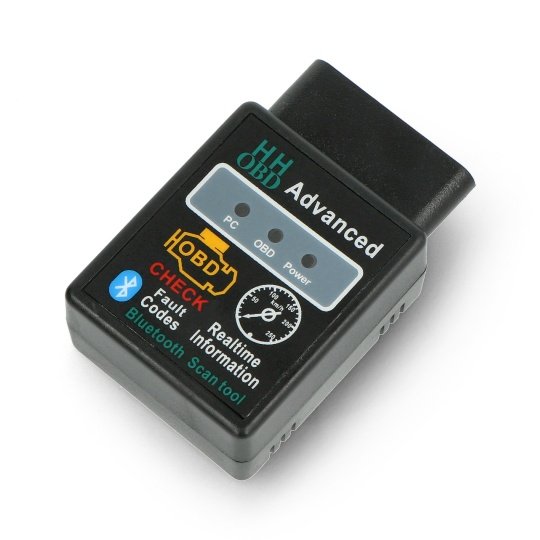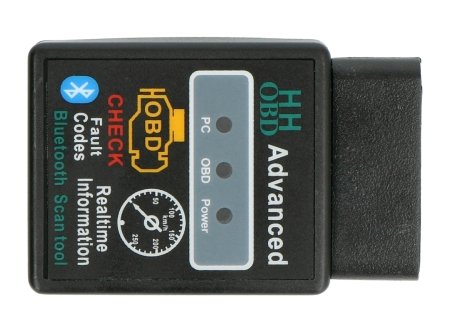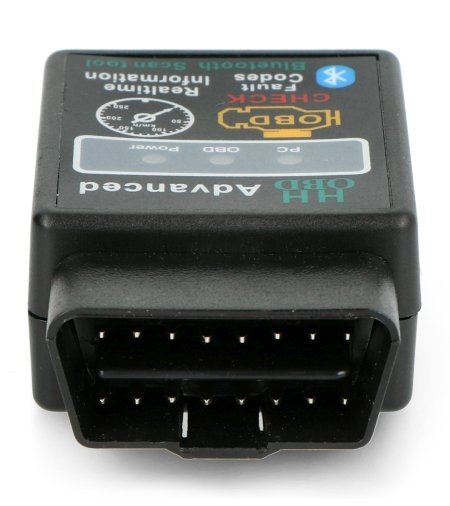Product description: Diagnostic interface - HH OBD Bluetooth scanner - advanced
Scanner used indiagnostics of car engines. It is used to verify the operation parameters of the vehicle's power unit both in a professional workshop and in a garage. The product usesBluetoothtechnology for data transmission. Measurement results can be read by a computer or a phone, which are compatible with this short-range wireless communication standard. The user can conveniently check the readings without the need for additional cables.
Compatibility of the device
The interface can be used for diagnostics of vehicles equipped withOBD2interface. Therefore it is compatible with the following groups of cars:
- Those sold after January 1, 1996 in the USA
- Sold after January 1, 2001 in the European Union
- Sold after January 1, 2002 in Poland
- With diesel engine, sold after 1 January 2003 in the European Union
Supported communication protocols in automobiles:
- ISO9141-2(5 baud init, 10.4 Kbaud)
- ISO14230-4 KWP (5 baud init, 10.4 Kbaud)
- ISO14230-4 KWP (fast init, 10.4 Kbaud)
- ISO15765-4 CAN (11 bit ID, 500 Kbaud)
- ISO15765-4 CAN (29 bit ID, 500 Kbaud)
- ISO15765-4 CAN (11 bit ID, 250 Kbaud)
- ISO15765-4 CAN (29 bit ID, 250 Kbaud)
- SAE J1939 CAN (29 bit ID, 250 Kbaud)
- USER1 CAN (11 bit ID, 125 Kbaud)
- USER2 CAN (11 bit ID, 50 Kbaud)
Types of readings
- Diagnostic trouble codes (more than 3000 general definition codes in the database)
- Debugging option and removal of MIL (Check Engine) light
- Display of the following sensor readings:
- Engine RPM (RPM)
- Load Value (Calculated Load Value)
- Coolant Temperature
- Fuel System Status
- Vehicle Speed
- Short Term Fuel Trim
- Long Term Fuel Trim
- Intake Manifold Pressure
- Timing Advance (Timing Advance)
- Intake Air Temperature
- Air Flow Rate
- Air Flow Rate
- Absolute Throttle Position
- Oxygen sensor voltages
- Fuel System Condition
- Fuel pressure
Useful links |

















































































































































































































































































































































